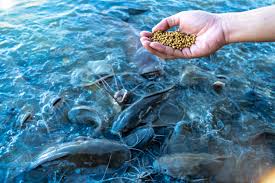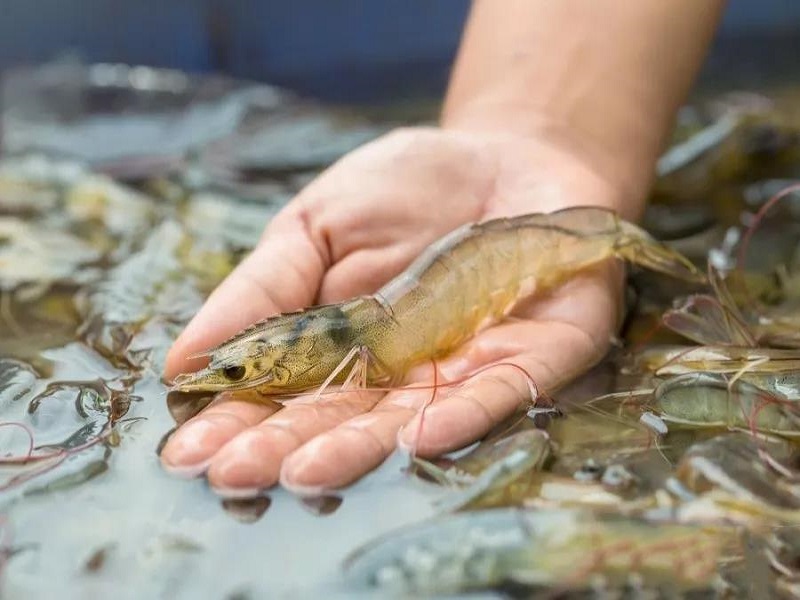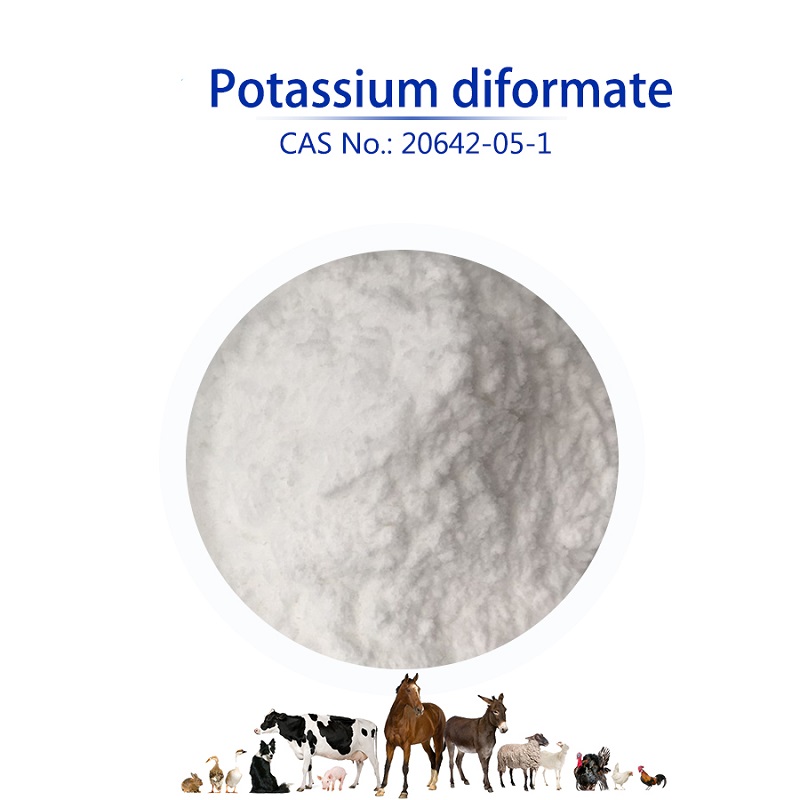Potassium diformate, with its unique antibacterial mechanism and physiological regulatory functions, is emerging as an ideal alternative to antibiotics in shrimp farming. By inhibiting pathogens, improving gut health, regulating water quality, and boosting immunity, it promotes the development of green and healthy aquaculture.
Potassium diformate, as a novel organic acid salt additive, has demonstrated broad application prospects in the aquaculture industry in recent years, particularly in shrimp farming where it exhibits multiple effects. This compound, composed of formic acid and potassium ions, is emerging as an ideal alternative to antibiotics due to its unique antibacterial mechanism and physiological regulatory functions. Its core value in shrimp farming is primarily reflected in four dimensions: pathogen inhibition, intestinal health improvement, water quality regulation, and immunity enhancement. These functions synergize to form a crucial technical foundation for healthy aquaculture.
In terms of antibiotic substitution, the antibacterial mechanism of potassium diformate has significant advantages. When potassium diformate enters the digestive tract of shrimp, it dissociates and releases formic acid molecules in an acidic environment. These formic acid molecules can penetrate bacterial cell membranes and dissociate into hydrogen ions and formate ions in an alkaline cytoplasmic environment, causing a decrease in the pH value inside bacterial cells and interfering with their normal metabolic activities.
Research has shown that potassium diformate has a significant inhibitory effect on common shrimp pathogenic bacteria such as Vibrio parahaemolyticus, Vibrio harveyi, and Escherichia coli, with a minimum inhibitory concentration (MIC) of 0.5% -1.5%. Compared with antibiotics, this physical antibacterial method does not induce bacterial resistance and there is no risk of drug residue.
Intestinal health regulation is another core function of potassium diformate. The release of formic acid not only inhibits harmful bacteria, but also creates a favorable microenvironment for the proliferation of probiotics such as lactic acid bacteria and bifidobacteria. The optimization of this microbial community structure significantly improves the digestion and absorption efficiency of the intestine.
Potassium diformate exhibits unique indirect effects in water quality regulation. In traditional aquaculture, about 20% -30% of feed nitrogen is not fully absorbed and discharged into water bodies, becoming the main source of ammonia nitrogen and nitrite. By improving feed utilization efficiency, potassium diformate effectively reduces nitrogen excretion.
Experimental data shows that adding 0.5% potassium diformate can reduce the nitrogen content in shrimp feces by 18% -22% and the phosphorus content by 15% -20%. This emission reduction effect is particularly significant in water cycle aquaculture systems (RAS), which can control the peak concentration of nitrite in the water below 0.1mg/L, far below the safety threshold for shrimp (0.5mg/L). In addition, potassium diformate itself gradually degrades into carbon dioxide and water in water bodies, without causing secondary pollution, making it an environmentally friendly additive.
The immune enhancing effect is another manifestation of the application value of potassium diformate. A healthy gut is not only an organ for nutrient absorption, but also an important immune barrier. Potassium diformate reduces systemic inflammatory response by regulating the balance of gut microbiota and minimizing the stimulation of pathogenic bacteria on intestinal epithelium. Research has found that adding potassium diformate to shrimp populations increases the number of blood lymphocytes by 30% -40%, and significantly enhances the activity of immune related enzymes such as phenoloxidase (PO) and superoxide dismutase (SOD).
In practical applications, the use of potassium diformate requires a scientific ratio. The recommended addition amount is 0.4% -1.2% of the feed weight, depending on the breeding stage and water quality conditions.
It is recommended to use a dosage of 0.6% -0.8% during the seedling stage (PL10-PL30) to promote intestinal development;
The cultivation period can be reduced to 0.4% -0.6%, mainly to maintain the balance of the microbial community.
It is worth noting that potassium formate should be thoroughly mixed with feed (using a three-stage mixing process is recommended), and prolonged exposure to high temperature and high humidity environments should be avoided before feeding to prevent clumping and affect palatability.
The combination use with organic acids (such as citric acid) and probiotics (such as Bacillus subtilis) can produce synergistic effects, but caution should be taken to avoid compatibility with alkaline substances (such as baking soda).
From the perspective of industrial development, the application of potassium diformate is in line with the general trend of green transformation in aquaculture.
Post time: Oct-28-2025








